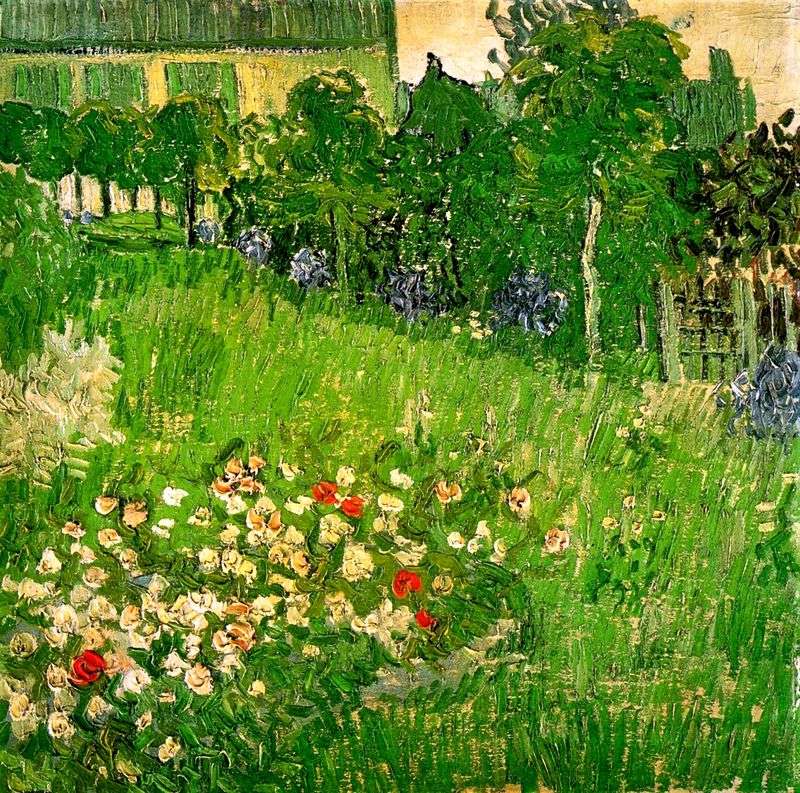
The landscape, written in 1885, depicts the house in which Van Gogh’s youth passed. Here he lived with his family for a long time. But after his father suddenly dies in 1885, Van Gogh, at the insistent request of Anna’s sister, leaves the parental home. Soon he moved to the rented room of the assistant at the church, which he had previously rented to the studio.
The painting is atypical for Van Gogh’s work. The artist almost never depicted such buildings, preferring the old peasant hovels. Most likely, he decided to write a parental home to leave a memory of him and make a gift to his brother Theo. Theo Van Gogh always supported Vincent in his difficult life both materially and morally. He was a support for his brother and best friend.
The landscape has an almost completely closed composition. The space is limited on both sides by branches of autumn trees. All attention is focused on the building of the house, which seems unnecessarily cumbersome and heavy. Occupying most of the canvas, it does not seem to leave room for other objects, for depth and for light.
The picture conveys a mood of depression and sadness. The impression is enhanced by the dark color scheme. The only bright spot the artist made the blue sky. Everything else is written in different tones of red and yellow ocher.
 House of Vincent in Arles (yellow House) by Vincent Van Gogh
House of Vincent in Arles (yellow House) by Vincent Van Gogh Vincent’s Bedroom in Arles (Van Gogh’s Bedroom) by Vincent Van Gogh
Vincent’s Bedroom in Arles (Van Gogh’s Bedroom) by Vincent Van Gogh White House at Night by Vincent Van Gogh
White House at Night by Vincent Van Gogh The way out of the Protestant church in Nyuenen by Vincent Van Gogh
The way out of the Protestant church in Nyuenen by Vincent Van Gogh The Garden of Dobigny in Over by Vincent Van Gogh
The Garden of Dobigny in Over by Vincent Van Gogh View of Paris from Vincent’s Room at Rue Lepic II by Vincent Van Gogh
View of Paris from Vincent’s Room at Rue Lepic II by Vincent Van Gogh Starry Night by Vincent Van Gogh
Starry Night by Vincent Van Gogh Pieta by Vincent Van Gogh
Pieta by Vincent Van Gogh